Microsoft HoloLens
The Microsoft HoloLens has great potential for the future of education as this device provides a “new way to visualize your

world” (Watters, A., n.d.). The HoloLens is a standalone holographic headset. This device provides a blend between virtual reality and real-life, also known as ‘mixed reality’ (“TedX Education Award 2017.” n.d.). The smart eyewear provides optic waveguide, eye and hand tracking, instinctual gestures, and virtualization and cloud computing. The lens has optical sensors, with two on each side providing an “environment understanding” sensing and are able to sense the user’s hand motions and interpret them. This interpretation can then manifest itself and interact or affect the digitally-rendered environment. The lens has microphones, HD cameras, and light sensors, all of which work in tandem to create the environment and overall experience.
The HoloLens was officially launched in 2016 and weighed around 1.3 pounds and mounted to the user’s head (Goode, L., n.d.). The device was only available to developers when it first launched as Microsoft wanted to spur the development of new applications as the headset would be more valuable with applications (Goode, L., n.d.). Later that year, the headset was available to any customer in the United States or Canada for US $3,000. They have since developed HoloLens 2 in hopes to address any of the shortcomings from the first model. The newest lens was released in November 2019. To perfect the design of the HoloLens 2, the team scanned over 600 human heads and 100 more were put through prototypes of version 2 (Goode, L., n.d.), in order to obtain a better understanding of comfort and usability. Prototypes included activities such as watching movies, playing games or conversing with other humans (Goode, L., n.d.). The goal was to have users forget they were wearing the device (Goode, L., n.d.).
The second version moved the major processing units to the back of the head to help with the comfort of the headset. They also tried to make the headset more breathable and eliminate the heat that users would experience when wearing it. The lenses can be flipped up and down and are able to quickly switch between holographic instructions and real-life (Goode, L., n.d.). The second version also improved the control with hand gestures, such as manipulating objects on the screen to twirl them, resize them, and even press them. The device also has better eye-tracking technology to improve user experience. For instance, while reading, one does not need to use their hands to move the page, their eyes simply do it for them (Goode, L., n.d.). This increase in ease of use will only make the device more attractive to potential users and increase its potential function.
The HoloLens can be classified as a type of augmented reality. Augmented reality technology gives the real environment a modified look provided by computers to generate objects and allow users to expand our physical world by adding layers of digital information onto it (“What is Augmented Reality (AR) and How does it work.,” n.d.). This provides the ability for technology to appear in direct view of an existing environment and adds sounds, video, and graphics to it (“What is Augmented Reality (AR) and How does it work.,” n.d.). This type of technology will continue to develop and be a big part of our future.
The HoloLens has many features. The cameras are depth-sensing and project holographic images directly into the user’s eye view (Goode, L., n.d.). This allows the device to superimpose digital renderings onto physical environments with accuracy in regards to scale and placement. The lenses are able to interact with the user given hand gestures and word commands (“TedX Education Award 2017.” n.d.). The front of the lens has many of the sensor and related hardware to do so, including processors, camera and projection lenses (“Knowledge shared by technology developers and scientists.” n.d). The visor is tinted, enclosed in the visor piece is a pair of transparent lenses that project images into the user’s field of vision (“Knowledge shared by technology developers and scientists.” n.d). Along the side, located near the user’s ears, are small audio speakers and allow for the users to hear virtual sounds while not abstracting the environment sounds (“Knowledge shared by technology developers and scientists.” n.d).
There are many applications that are available for the HoloLens that are educationally enhancing. An app called HoloTour allows users to view 360-degree video, sound, and scenery around the world, such as Machu Picchu and the Colosseums (Vasaikar, B., 2019). Users have a tour guide, named Melissa, that totally immerses them into the experience (Vasaikar, B., 2019). The Insight Heart app provides a view of a virtual heart. This app shows visuals of infarction, arterial hypertension, atrial fibrillation. Users can control the heart by using gestures or voice commands and can move, rotate and scale the heart (Vasaikar, B., 2019). The application also shows the experience of the heartbeat in real-time (Vasaikar, B., 2019). This application improves medical educational methods and takes education to the next level (Vasaikar, B., 2019). There is also a HoloAnatomy application that allows users to view complete full-size anatomical models (Vasaikar, B., 2019). Users can view the human body at any angle. Another application, The HoloStudy Demo, contains a series of geology, physics chemistry and biology lessons (Vasaikar, B., 2019). The app provides a virtual professional that helps students understand the complexity of science (Vasaikar, B., 2019). The Red Pill application is a little different from the others (Vasaikar, B., 2019). This app shows the codes behind the real world (Vasaikar, B., 2019). It connects the HoloLens to the matrix letting you see the code which makes up structures (Vasaikar, B., 2019). This highlights some of the education applications available with the HoloLens, although there are many other applications available for these devices.
Students can benefit from the HoloLens for subjects such as science, chemistry, math and much more. For instance, medical students could benefit from this device. Applications within the device allow for medical holograms that can show the human body and allows for a three-dimensional model (“TedX Education Award 2017.” n.d.). By connecting the human body movement and the virtual anatomical model, students could learn the physical movement while studying the virtual model (“TedX Education Award 2017.” n.d.). HoloLens also provides 3D geometry and would help students teach them firsthand rather than having a teacher draw them on a two-dimensional whiteboard (M, K., 2018). Students can also learn the solar system with these lenses. Seeing the planets, moons and asteroids moving provides a view of the earth from outer space which allows them to understand more about the size of their own country, location of other places across our planets (M, K., 2018). Students can also perform lab virtually (Joseph, T., 2019). The HoloLens allows students to engage hands-on in their subject to reach new dimensions of understanding (Mangiaracina, B., 2017). This device has the potential to create a more visual and tactile experience for students (Mangiaracina, B., 2017). These devices will help foster social and emotional learning. Mixed reality can break through emotional barriers for students. Students would have the experience and thus allow them to learn the material better.
What does this type of device mean for the future? Augmented reality is set to revamp the world’s conventional learning model (Joseph, T., 2019). It can help change the location and timing of classes. By providing visual presentation, augmented reality will help students acquire, process and remember information (Joseph, T., 2019). The HoloLens will help students test out their knowledge in practice (Joseph, T., 2019). The HoloLens is a way to present a subject that students are expected to learn but adds creativity, interactivity and engagement complexity to the subject (Joseph, T., 2019). These glasses provide a more engaging learning style and help students not just to see, but also experience and participate. Students can view knowledge but also interact with it. The HoloLens will also provide a fun aspect to lessons (Joseph, T., 2019). Today’s generation is moving away from the classic chalkboard teaching method (Joseph, T., 2019). This is a way to help continue elaboration education. It gives another way to approaching visual learning (Joseph, T., 2019). The HoloLens provides another way for students to learn that is outside the traditional form. It provides an electronic model in front of their eyes, manipulating that model and interacting with it to help students get a more physical response to what they are learning.
Microsoft Mixed Reality is said to improve test scores among students using immersive technology by 22% and improve student engagement and retention when learning with immersive and 3D technologies by 35% (“Mixed Reality for Education.,” n.d.). According to a survey on the impact of interactive technology on students, it was said that 87% were likely to attend the class, 72% were likely to participate and 70% of students said that they improved their understanding of specific concepts (Joseph, T., 2019). Such statistics could suggest that students’ participation, attendance, and understanding may improve with such technology (Joseph, T., 2019). By pairing an increase in participation and improvement in the quality of the overall educational experience, the potential improvements to the overall education system is obvious.
There is so much potential with the Microsoft HoloLens to impact the way students learn. This device allows students to view education in a way like never before and can be so impactful for them. Students can actually experience what they are learning beyond a simple visual or other passive means. By increasing the overall quality of education and creating a more involved, “hands-on” experience, such technologies will impact the lives of students. The HoloLens provides a way to eliminate some barriers students face, such as access to more complex learning systems, and can improve upon certain physical deficiencies students may have. The HoloLens can bring the textbook to life; education will never be the same.
7 T h i n g s ab o u t M i c r o s o f t Ho l o l e n s. (n.d.). Retrieved from https://www.gvsu.edu/cms4/asset/7E70FBB5-0BBC-EF4C-A56CBB9121AECA7F/7_things_about_microsoft_hololens.pdf
Goode, L. (n.d.). The HoloLens 2 Puts a Full-Fledged Computer on Your Face. Retrieved from https://www.wired.com/story/microsoft-hololens-2-headset/
HoloLens 2-Pricing and Options: Microsoft HoloLens. (n.d.). Retrieved from https://www.microsoft.com/en-us/hololens/buy
Joseph, T. (2019, September 24). Impact Of Augmented Reality In Education Industry: Fingent Blog. Retrieved from https://www.fingent.com/blog/impact-of-augmented-reality-in-education-industry
Knowledge shared by technology developers and scientists. (n.d.). Retrieved from https://www.wevolver.com/wevolver.staff/hololens.gen.1/
M, K. (2018, January 1). How Microsoft Hololens is being used in Education. Retrieved from https://arvredtech.com/blogs/news/how-microsoft-hololens-is-being-used-in-education
Mangiaracina, B. (2017, May 2). Microsoft Wants to Make HoloLens the Future of Education. Retrieved from https://augmented.reality.news/news/microsoft-wants-make-hololens-future-education-0177396/
Mixed Reality for Education. (n.d.). Retrieved from https://www.microsoft.com/en-ca/education/mixed-reality
TedX Education Award 2017. (n.d.). Retrieved from https://mr4education.com/home/
Vasaikar, B. (2019, April 24). 10 Useful AR Applications on Microsoft HoloLens. Retrieved from https://www.techprior.com/10-useful-ar-applications-on-microsoft-hololens/
Watters, A. (n.d.). What is the Microsoft Hololens? Retrieved from https://www.dummies.com/consumer-electronics/what-is-the-microsoft-hololens
What is Augmented Reality (AR) and How does it work. (n.d.). Retrieved from https://thinkmobiles.com/blog/what-is-augmented-reality/
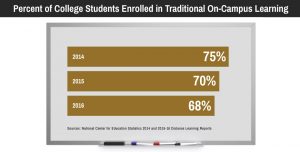
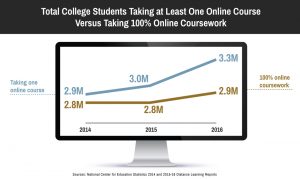
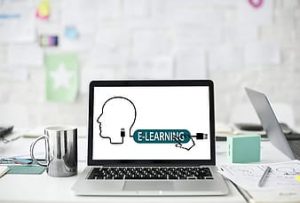 individual basis (floe flexible learning for open education., n.d. para. 1). I resonate strongly with the statement that addresses how each individual learns differently. I remember throughout my high school education, I often struggled with reading comprehension and I would discuss with the teacher about my results. The feedback they would give to me would be something along the lines that my thought process was wrong and that I needed to think about the article in a different way. I never really understood how I needed to change the way I think. For instance, when you ask individuals to describe how a car crash happened, every single individual saw the same incident, but in a different way. There are many different learning styles that people can learn from. When designing learning tools for individuals, one needs to consider that people think differently and learners learn differently. For example, certain people can apply visual aids as cues to recall information, and certain people can apply audio cues to recall information. Neither technique can be described as superior, but one can be more helpful than the other in specific circumstances.
individual basis (floe flexible learning for open education., n.d. para. 1). I resonate strongly with the statement that addresses how each individual learns differently. I remember throughout my high school education, I often struggled with reading comprehension and I would discuss with the teacher about my results. The feedback they would give to me would be something along the lines that my thought process was wrong and that I needed to think about the article in a different way. I never really understood how I needed to change the way I think. For instance, when you ask individuals to describe how a car crash happened, every single individual saw the same incident, but in a different way. There are many different learning styles that people can learn from. When designing learning tools for individuals, one needs to consider that people think differently and learners learn differently. For example, certain people can apply visual aids as cues to recall information, and certain people can apply audio cues to recall information. Neither technique can be described as superior, but one can be more helpful than the other in specific circumstances.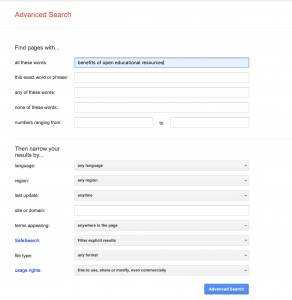
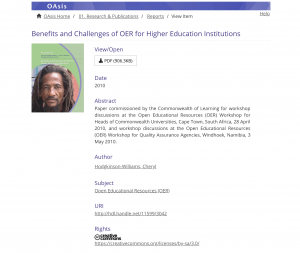
 I did not mind this, rather, as I much preferred having direction and to know what is expected from me. I have found with previous experiences of taking online courses, I was often lost on where to start and how to proceed. For example, I took an online course in high school and I found it difficult to know what the teacher expected with regards to assignments or where to start. In a classroom setting, the first class is often left
I did not mind this, rather, as I much preferred having direction and to know what is expected from me. I have found with previous experiences of taking online courses, I was often lost on where to start and how to proceed. For example, I took an online course in high school and I found it difficult to know what the teacher expected with regards to assignments or where to start. In a classroom setting, the first class is often left